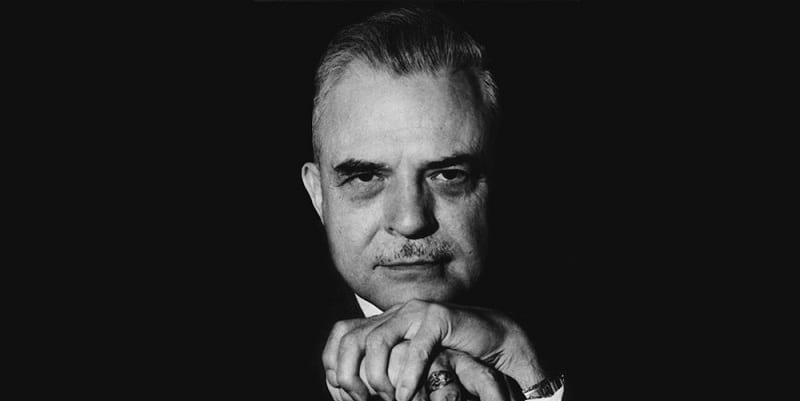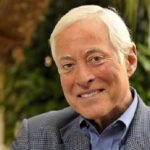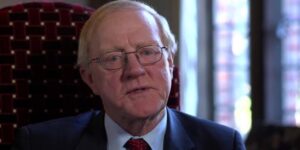Milton Erickson biografie en quotes

Milton Erickson (Milton Hyland Erickson; December 5, 1901 – March 25, 1980) was een Amerikaanse psychiater en psycholoog. Hij was gespecialiseerd in medische hypnose en gezinstherapie. Milton Erickson was ook oprichter en voorzitter van de American Society for Clinical Hypnosis en verbonden aan de American Psychological Association en de American Psychopathological Association.
De biografie van Milton Erickson
Jeugd
Milton Erickson werd geboren in Aurum, in de staat Nevada. Hij groeide op in Wisconsin en zijn jeugd werd gekenmerkt door ziekte en lijden. In herinneringen over zijn jeugd die hij op latere leeftijd deelde, verwees hij vaak naar auto-hypnotische lichtflitsen.
Tijdens zijn ziektes ervoer hij een hypnotische toestand waarin hij zich zeer bewust was van het feit dat zijn fysieke communicatie vaak tegenstrijdig was met zijn verbale communicatie. Hij concentreerde zich op het leren begrijpen van zijn eigen lichaamstaal. Deze interesse zou de boventoon voeren gedurende zijn gehele professionele loopbaan.
Milton was het tweede kind van de negen kinderen van Albert en Clara Erickson. Hij werd geboren in een mijnkamp, in Nevada. Zijn vader had hier een baan als zilverdelver. Al snel verhuisde het gezin naar een boerengemeenschap, Beaver Dam, in Wisconsin. Alle kinderen gingen naar dezelfde school, bestaande uit een enkel klaslokaal. Van alle kinderen werd verwacht dat ze hard werkten op de boerderij.
Ziekte en ongemak
Erickson was naar eigen zeggen laat met leren spreken en had ook moeite met lezen als peuter. Hij beschreef dit zelf als dyslexie.
Hij verklaarde later dat de dyslexie, en andere ongemakken zoals kleurenblindheid en toondoofheid, hem hielpen om aspecten van communicatie te onderscheiden die andere mensen over het hoofd zagen. Deze positieve kijk op zijn moeilijke jeugd zou kenmerkend worden voor zijn totaalaanpak gedurende zijn leven.
Hoewel de familie onderwijs ook belangrijk vond, waren boeken schaars. Erickson ’s wens om veel te leren was zo sterk, dat hij verschillende keren het woordenboek van voor naar achter las. Ook las hij de weinige teksten en boeken die de familie bezat. Op een gegeven moment dacht hij dat hij zijn dyslexie had overwonnen. Hij beschreef deze belangrijke momenten in een paper met de naam ‘Auto-hypnotic Experiences of Milton Erickson’.
Polio
Op 17-jarige leeftijd werd de jonge Milton getroffen door polio, waaraan hij levenslange handicaps overhield. Hierdoor kreeg hij de kans om het potentieel van zelfgenezing door middel van hypnose te verkennen. Hij begon zich actief lichaamsherinneringen te herinneren, door aan de spieractiviteit van zijn eigen lichaam te denken.
Door zich te focussen op deze oefeningen, kreeg hij langzaam enige controle terug over delen van zijn lichaam. Uiteindelijk was hij in staat om zelf weer te praten en zijn armen te gebruiken. Hij kon nog steeds niet lopen op dat moment.
Kanotocht
Hij besloot zichzelf nog verder uit te dagen. Hij begon een kanotocht te maken van 1000 mijl, met slechts een paar dollar op zak. Na deze barre tocht kon hij weer lopen, hetzij met een wandelstok. Pas in het laatste decennium van zijn leven was een rolstoel noodzakelijk. Zijn zelfgenezing schreef Milton volledig toe aan zijn auto-hypnose.
Nadat de jonge Milton weer kon lopen, ging hij naar de Universiteit van Wisconsin. Hier haalde hij een diploma in de psychologie en geneeskunde. Hij begon daarna een formele studie naar hypnose in het laboratorium van Clark Hull. Om zijn ideeën te verschillend waren van de ideeën van Hull, begon Erickson onafhankelijk een onderzoek naar de aard van hypnose.
Hij behaalde een MD-graad aan de University of Wisconsin School of Medicine in 1928, waarna hij tussen 1929 en 1948 belangrijke functies vervulde bij staatsziekenhuizen die actief onderzoek mogelijk maakten.
Tweede Wereldoorlog
Tijdens de Tweede Wereldoorlog voerde Erickson mentale en fysieke onderzoeken uit bij soldaten die terugkwamen van het slagveld. Amerikaanse inlichtingendiensten vroegen hem ook andere experts te ontmoeten, in de hoop dat zij samen factoren zouden ontdekken die ingezet kunnen worden om de communicatie tussen soldaten in gevechten te bevorderen.
Op deze manier leerde Erickson Margaret Mead en Gregory Bateson kennen, met wie hij vriendschappen voor het leven zou sluiten. Het drietal werkte samen aan tal van projecten en onderzoeken, zoals aan strategische therapie.
Latere leven van Milton Erickson
Toen hij bijna vijftig jaar oud werd, ontwikkelde Milton het postpoliosyndroom. Dit omvat onder andere spierverlies en pijn. Rond deze periode vertrok het gezin naar Phoenix, Arizona. Ze dachten dat de betere weersomstandigheden zouden helpen met zijn genezing. In Phoenix vestigde Erickson zich in een privépraktijk aan huis, waar hij de rest van zijn leven zou werken.
In Phoenix was Milton actief in de Society for Clinical and Educational Hypnosis (SCEH). Deze organisatie promootte onderzoek en leerde artsen om te gaan met klinische hypnose. Vanwege persoonlijkheidsconflicten en eigen opvattingen, maakte Erickson zich los van de organisatie en richtte zelf de American Society for Clinical Hypnosis (ASCH) op in 1957.
Gedurende tien jaar was hij de oprichter en redacteur van het American Journal of Clinical Hypnosis en had hij in elke uitgave minstens een nieuw artikel. De volgende 2 decennia van zijn leven besteedde hij aan het lesgeven aan andere professionals en het onderhouden van zijn privépraktijk.
Hij is vooral bekend geworden met zijn theorie en opvatting over het onderbewustzijn. Hij wordt daarnaast genoemd voor zijn bijdragen in de gezinstherapie, neuro-linguïstisch programmeren en oplossingsgerichte korte therapie.
Zijn relatie met Gregory Bateson bracht sommige onderzoekers ertoe om belangstelling te tonen voor Ericksons unieke communicatieve vaardigheden en therapeutische benaderingen. Ericksons reputatie verspreidde snel en veel mensen wilde hem zien en seminars van hem bijwonen. Dit bleef hij uiteindelijk doen tot aan zijn dood.
Milton Erickson stief in maart 1980. Hij werd 78 jaar oud. Hij liet zijn vrouw Elizabeth achter, vier zonen en vier dochters.
Bekende quotes van Milton Erickson
- “A goal without a date is just a dream.”
- “Life will bring you pain all by itself. Your responsibility is to create joy.”
- “Enlightenment is always preceded by confusion.”
- “Allow yourself to see what you don’t allow yourself to see.”
- “Change will lead to insight far more often than insight will lead to change.”
- “What is easiest to see is often overlooked.”
- “Life isn’t something you can give an answer to today. You should enjoy the process of waiting, the process of becoming what you are. There is nothing more delightful than planting flower seeds and not knowing what kind of flowers are going to come up.”
- “The most important thing in changing human behavior is the person’s motivation.”
- “You can pretend anything and master it.”
- “People do not come into therapy to change their past but their future.”
- “The unconscious mind works without your knowledge and that is the way it prefers.”
- “The unconscious mind is decidedly simple, unaffected, straightforward and honest. It hasn’t got all of this facade, this veneer of what we call adult culture. It’s rather simple, rather childish It is direct and free.”
- “Trance is a natural everyday experience.”
- “You can’t effect the cards that you are dealt, but you can determine how you play them.”
- “There are so many things in human living that we should regard not as traumatic learning but as incomplete learning, unfinished learning.”
- “I am very confident. I look confident. I act confident. I speak in a confident way…”
- “Life is lived in the present and directed toward a future.”
- “You see, we don’t know what our goals are. We learn our goals only in the process of getting there You don’t know what the baby is going to become. Therefore, you wait and take good care of it until it becomes what it will.”
- “You use hypnosis not as a cure but as a means of establishing a favorable climate in which to learn.”
- “You don’t take insults. You leave them with the insulter.”
- “Until you are willing to be confused about what you already know, what you know will never grow bigger, better, or more useful.”
- “You can’t learn to swim on a piano bench.”
- “You can trust the unconscious.”
- “Therapy is often a matter of tipping the first domino.”
- “I have no intention of dying. In fact, it will be the last thing I do!”
- “How many of us really appreciate the childishness of the unconscious mind?”
- “People who accomplish a great many things are people who have freed themselves from biases. These are the creative people.”
- “Emphasis should be placed more on what the patient does in the present and will do in the future than on a mere understanding of why some long-past event occurred.”
- “The conscious ego cannot tell the unconscious what to do?”
- “Don’t ask why the patient is the way he is, ask for what he would change.”
- “We always translate the other person’s language into our own language.”
- “Each person is a unique individual. Hence, psychotherapy should be formulated to meet the uniqueness of the individual’s needs, rather than tailoring the person to fit the Procrustean bed of a hypothetical theory of human behavior.”
- “Life’s difficulties are merely necessary roughage.”
- “The Structure of Magic I by Richard Bandler and John Grinder is a delightful simplification of the infinite complexities of the language I use with patients. In reading this book, I learned a great deal about the things that I’ve done without knowing about them.”
- “Dreams, puns, elisions, plays on words and similar tricks that we ordinarily think of as frivolous, all play a surprising and somewhat disconcerting role in the communication of important and serious feelings.”
- “Shut up, sit in that chair there and go into a deep trance!”
- “When I wanted to know something, I wanted it undistorted by somebody else’s imperfect knowledge.”
Bekende publicaties en boeken van Milton Erickson et al.
- 2009. Naturalistic techniques of hypnosis. American Journal of Clinical Hypnosis, 51(4), 333-340.
- 1981. Experiencing hypnosis. New York: Irvington.
- 1977. Autohypnotic Experiences of of Milton H. Erickson. American Journal of Clinical Hypnosis, 20(1), 36-54.
- 1976. Hypnotic realities. New York: Irvington.
- 1976. Two level communication and the microdynamics of trance and suggestion. American Journal of Clinical Hypnosis, 18(3), 153-171.
- 1975. Varieties of double bind. American Journal of Clinical Hypnosis, 17(3), 143-157.
- 1970. Hypnosis: Its renascence as a treatment modality. American Journal of Clinical Hypnosis, 13(2), 71-89.
- 1967. An introduction to the study and application of hypnosis for pain control. In Hypnosis and Psychosomatic Medicine: Proceedings of the International Congress for Hypnosis and Psychosomatic Medicine/Mémoires du Congrès International d’Hypnose et de Médecine Psychosomatique/Beiträge zum Internationalen Kongreß für Hypnose und Psychosomatische Medizin (pp. 83-90). Springer Berlin Heidelberg.
- 1966. The interspersal hypnotic technique for symptom correction and pain control. American Journal of Clinical Hypnosis, 8(3), 198-209.
- 1965. The use of symptoms as an integral part of hypnotherapy. American Journal of Clinical Hypnosis, 8(1), 57-65.
- 1964. The confusion technique in hypnosis. American Journal of Clinical Hypnosis, 6(3), 183-207.
- 1964. An hypnotic technique for resistant patients: The patient, the technique and its rationale and field experiments. American Journal of Clinical Hypnosis, 7(1), 8-32.
- 1959. Hypnosis in painful terminal illness. American Journal of Clinical Hypnosis, 1(3), 117-121.
- 1959. Further clinical techniques of hypnosis: Utilization techniques. American Journal of Clinical Hypnosis, 2(1), 3-21.
- 1958. Pediatric hypnotherapy. American Journal of Clinical Hypnosis, 1(1), 25-29.
- 1954. Special techniques of brief hypnotherapy. International Journal of Clinical and Experimental Hypnosis, 2(2), 109-129.
- 1954. Pseudo-orientation in time as an hypnotherapeutic procedure. International Journal of Clinical and Experimental Hypnosis, 2(4), 261-283.
- 1948. Hypnotic psychotherapy. Medical Clinics of North America.
- 1941. The successful treatment of a case of acute hysterical depression by a return under hypnosis to a critical phase of childhood. The Psychoanalytic Quarterly, 10(4), 583-609.
- 1941. Concerning the nature and character of post-hypnotic behavior. The Journal of General Psychology, 24(1), 95-133.
- 1939. The permanent relief of an obsessional phobia by means of communications with an unsuspected dual personality. The Psychoanalytic Quarterly, 8(4), 471-509.
- 1939. The induction of color blindness by a technique of hypnotic suggestion. The Journal of General Psychology, 20(1), 61-89.
Citatie voor dit artikel:
Janse, B. (2023). Milton Erickson. Retrieved [insert date] from Toolshero: https://www.toolshero.nl/bekende-auteurs/milton-erickson/
Oorspronkelijke publicatiedatum: 20/05/2023 | Laatste update: 04/01/2024
Wilt u linken naar dit artikel, dat kan!
<a href=”https://www.toolshero.nl/bekende-auteurs/milton-erickson/”>Toolshero: Milton Erickson</a>












